Xenoblade Chronicles 2 Review
A majestic journey tinged with a few weird quirks that are distinctly Xenoblade
It’s not too often that I can truly warrant shelling out 60 dollars for a video game, even a robust RPG. But I can safely say that Xenoblade Chronicles 2 has secured a spot in the highly exclusive club of elite titles which doesn’t only measure up to its cost but may even exceed it. This sequel for the Switch grabs a hold of you and rarely lets go. It consumes you and guides you through an enriching ride with its array of majestic environments, colorful visuals, interesting and likable characters, and an overall captivating narrative. But beneath the glossy surface contains an elaborate, well-oiled machine of core gameplay elements as well. Xenoblade 2 is simply bursting at the seams with some feverishly addictive gameplay, intricate mechanics, and a bounty of content. There are a few unpolished bits and strange quirks embedded within this large mechanism, but it produces such a level of greatness that these minor flaws mostly fall by the wayside. The result is an enthralling JRPG experience and a Switch title that gives the likes of Zelda and Skyrim a run for their money.
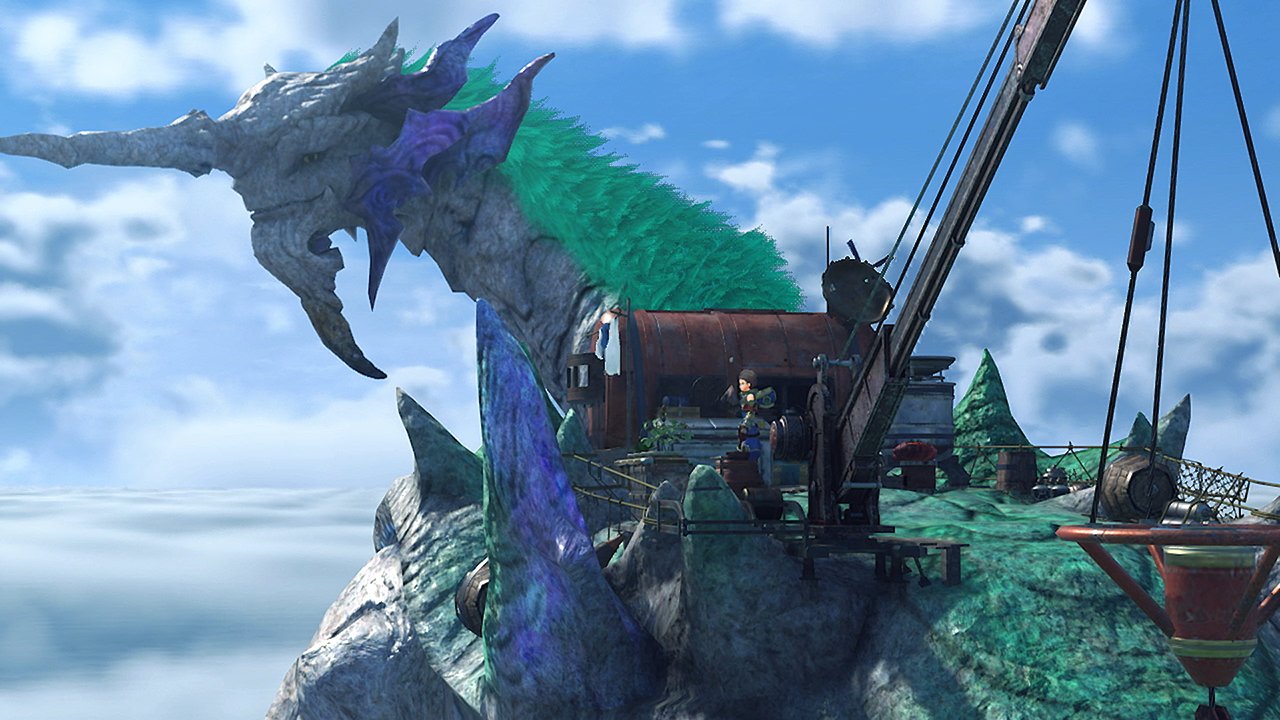
Departing from the spinoff Xenoblade Chronicles X on the Wii U, this Switch sequel returns to the style and mythos of the original Xenoblade. Rather than the super-sword wielding Shulk and friends returning, we now take on the role of the more lighthearted and humble Rex, a scavenger of the massive Cloud Sea and soon to be Driver. Drivers are names given to fighters who wield the powers of magical life forms known as Blades, taking the place of the iconic Monado sword from the Wii game. Blades take on an equally prominent role however, as they’re essentially a juiced-up, immortal version of humans who hold various elemental powers at their disposal. They’re sort of Tolkien’s Elves meets Pokemon, ranging from weird-looking humanoids to wolf-like beasts, and apparently an occasional attractive, scantily clad woman. These Blades are scattered throughout the many lands of the world of Alrest, and are birthed from blue glowing “core crystals.” This concept is certainly a cool gimmick that adds a distinct flavor to a genre that’s been rife with familiar concepts and cliches; one which developer Monolith Soft does a fine job of playing with.
Rex, along with a band of fellow Drivers he meets during his quest, finds a special Blade named Pyra, a sought after “Aegis,” who we come to learn plays a major role in the story, more so than her more modestly clothed Blade brethren. The Blades are the crux that both the narrative and the unique gameplay largely revolve around, joining the archives of Xenoblade lore along with the Titans. Players of the original Xenoblade may recall that Titans are gigantic god-like beasts whose bodies make up the landmass inhabited by all living things. Like the Blades, they are firmly interwoven into Xenoblade 2’s mythos and play an integral part in its story. Rather than two larger Titans comprising the lands of the first game, we now have a cluster of several smaller ones, which you visit during the course of the journey. In fact, it’s revealed that there had been an even greater number of Titans centuries ago; but warfare, as well as the natural aging of the creatures, have created a lack of livable land and resources. This in turn begets even more fighting and political strife, and thus we’re thrown into a web of major conflicts and drama that comprises the narrative of Xenoblade 2.
There are many aspects in play here; we have nations and factions at odds with each other, Blades at odds with humans, Blades fighting other Blades - you name it. During the journey, Rex and company find themselves in the thick of this instability. Motivated by a desire to put an end to the whirlwind of conflict, protect the Aegis, and to find a more prosperous place to live, they venture to the center of the known world, of which all the Titans literally revolve around. Here lies a romanticized land steeped in legend called Elysium, which sits atop the World Tree. But many of the various forces in play - each with their own motives - either want to control the area themselves or bar our heroes from reaching it. It’s all quite mythological, even Biblical in nature - as we’re guided through an origin story that continues to escalate further in scale and significance, until it all reaches a satisfying crescendo.
There are occasions of overly-convoluted plot points thanks to the abundance of characters, some frequent, drawn-out cutscenes, anime tropes, along with a bland subplot in the middle of the game involving the production of “artificial” Blades which are basically robots. But I enjoyed the story as a whole, as well as the charming and complex characters which add some emotional weight and make the plot feel more human in nature. It was certainly superior to X’s slow-building exposition and cliche Sci-Fi backstory that struggled to contain a centralized focus. Does it match up to the original Xenoblade for Wii? Not quite, but its improved combat system more than makes up for this.
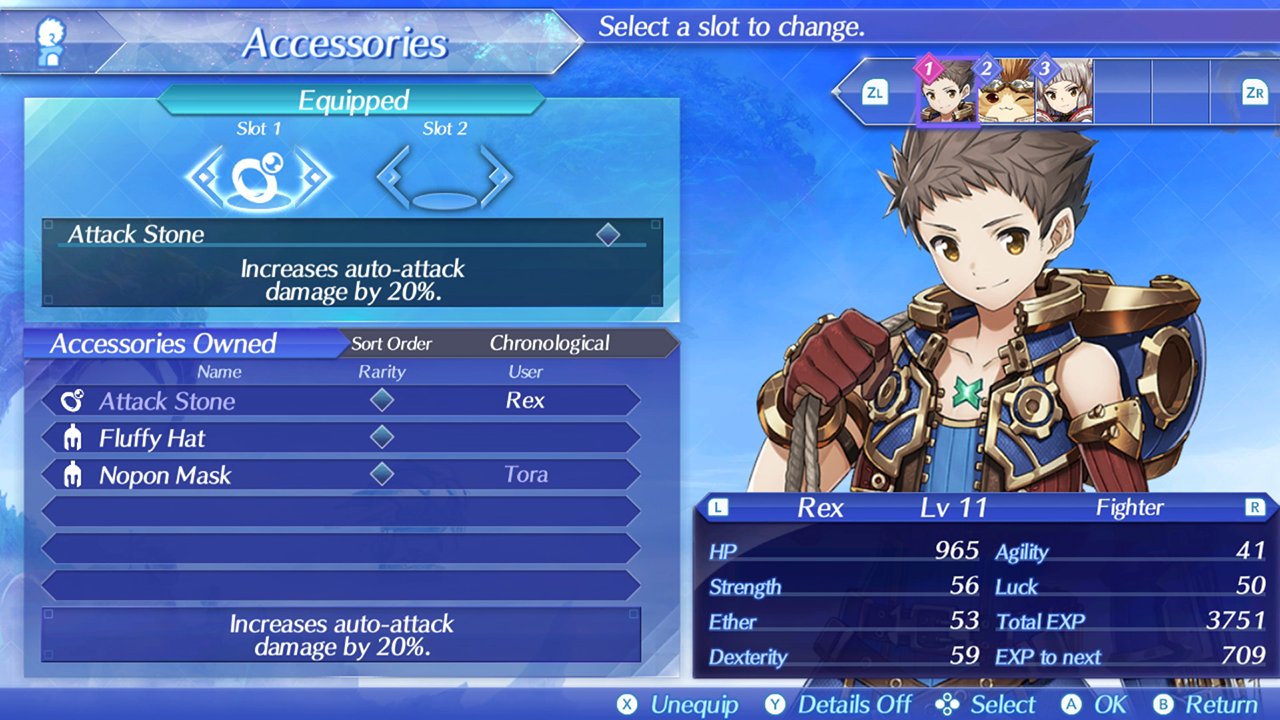
Monolith Soft has done a superb job of revamping the mechanics of combat to make for a complex yet user friendly experience, while retaining subtle elements that worked well from prior entries. There is a plethora of attacks and strategies you can utilize rather than mindlessly sitting back hacking away with auto-attacks. The game impressively manages to cram even more intricacies into the system this time around, while also tweaking the interface to be easier and more efficient to use. Rather than scrolling through a list of potential moves ala Xenoblade 1, you’re now given Blade attacks which are directly mapped to the Switch’s face buttons. You can carry up to 3 Blades and swap them out on the fly by mapping them to the directional buttons. The interface is very manageable and clearly displayed despite all the factors involved, and I was able to grasp at least the basics pretty easily.
There are, however, several layers of more complex details and strategies that dedicated players can play around with to gain the upper hand, and which you’ll need to at least moderately understand when delving into the later chapters. Auto attacks for instance, each contain a distinct combo of strikes that vary in timing and animation depending on which blade you use. Tapping a button for a Blade art shortly following the end of this combo will increase the damage for said ability. If timed successfully, this will accelerate the process of enabling a special move mapped to “A” button, which eventually reaches a potential of building up to 4 tiers of strength. Each Blade also embodies a different elemental type, and you can initiate a special move that corresponds to an element indicated on the top right of the screen - known as a Blade combo. Once you’ve fulfilled this condition, it’ll trigger the next level’s requirement where you repeat the process until you complete a third elemental move. Are you taking notes? This is going to be on the test.
Once the final stage of the Blade combo is completed, an orb of that element will form and rotate around the enemy, which can then be further exploited by using a chain attack. Chain attacks unleashes all party members on the opponent and can pack a punch. With elemental orbs in the mix, you can further compound the damage by bursting them during your chain attack, allowing you to string several attacks together. Some enemies also come with elemental weaknesses which can be taken advantage of Pokemon-style. The combat system is like a sort of violent dance that factors in timing, location, stacking effects like toppling, linking moves, and utilizing elemental types; all of which contribute to efficiency in one way or another. Once you get into the swing of it, this system proves to be an enjoyable and rewarding process that rarely gets old despite the frequency of battles you’ll be fighting.
It all seems like a ton to digest, but the game does a fine job at staggering out the introduction of these little nuances as you go along with tutorial prompts. Even 40 hours in, I was still shown an occasional new move or strategy to toy with. At times these interruptions can break the flow of the gameplay and border on annoying, especially early on when they occur more frequently. Nonetheless, they go a long way in getting you acquainted with the unique system by guiding you along in baby steps; this is assuming you take the time to really focus on the brief explanations. You’ll only be told once and can’t draw them up again, unless you’d prefer to needlessly burn currency by buying them in the form of vague descriptions from town Informants.
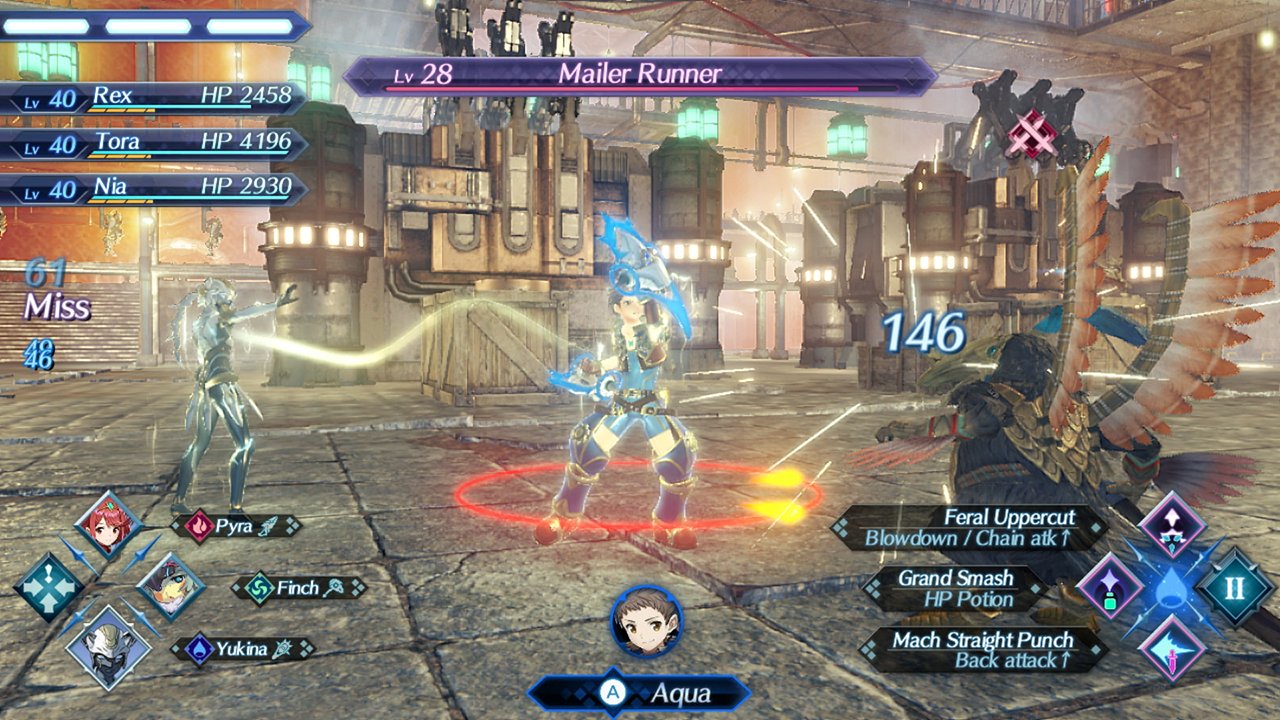
The menu screen, and the upgrades/customizations that come with it are similarly complex and convoluted enough to make your head spin at first glance. This aspect of the game proved a bit more cumbersome and overindulgent for me, but the more hardcore RPG fans who revel in complete control and exploitation of mechanics will probably appreciate it. There seem to be a thousand ways to customize and beef up both your character and accompanying Blades, but I’ll touch on the key aspects. You can upgrade weapons both with enhancements called “chips” and by earning weapon points which are earned in combat. There is also the more subtle and intricate means of improving Blades known as affinity. Drawing from another familiar Xenoblade staple, affinity works as a sort of achievement system which grants a number of advantages to Blades once the specified requirements are met. Drivers are given a more simplified web of statistic nodes, which can be unlocked by using skill points accumulated in battle.
In a more distinct Xenoblade 2 feature - equippable armor is thrown out the window - at least in the traditional sense, as it comes only in the form of a diverse palette of interchangeable accessories. Each accessory contains a number of various statistic boosts or perks, and only a limited number can be equipped. In theory at least you’ll want to assign them according to a fighter’s role in battle. For instance, tanks will be best served with HP boosts, whereas healers will want items that maximize their magic or “either,” as well as healing abilities. Blades come with their own equivalent of this, known as “aux cores” which annoyingly can’t be used until they’re refined using various materials gathered from collection points throughout Alrest.
Blades also possess traits that make for a somewhat burdensome game feature called “field skills.” These are utilized to unearth or access certain treasures, traverse shortcuts, or reach otherwise inaccessible areas throughout. They’re a bit overused, and slow things down more than they probably should, especially when you’ve found that you have to shuffle through Blades or fulfill an affinity requirement in order to initiate them.
The elaborate system of upgrades and customization is something of a mixed bag. It provides a vast array of tools to tune up, refine, and mold Drivers and their Blades to your liking. With that said, constantly scanning several menu options, sifting through collections of stockpiled items the game showers you with, and reading endless lists of statistics can feel like a bit of a chore at times. Patient players with a strategic mindset however will definitely find an extra layer of depth outside straight up grinding and slipping on armor, enabling them to get that little extra edge in battle.
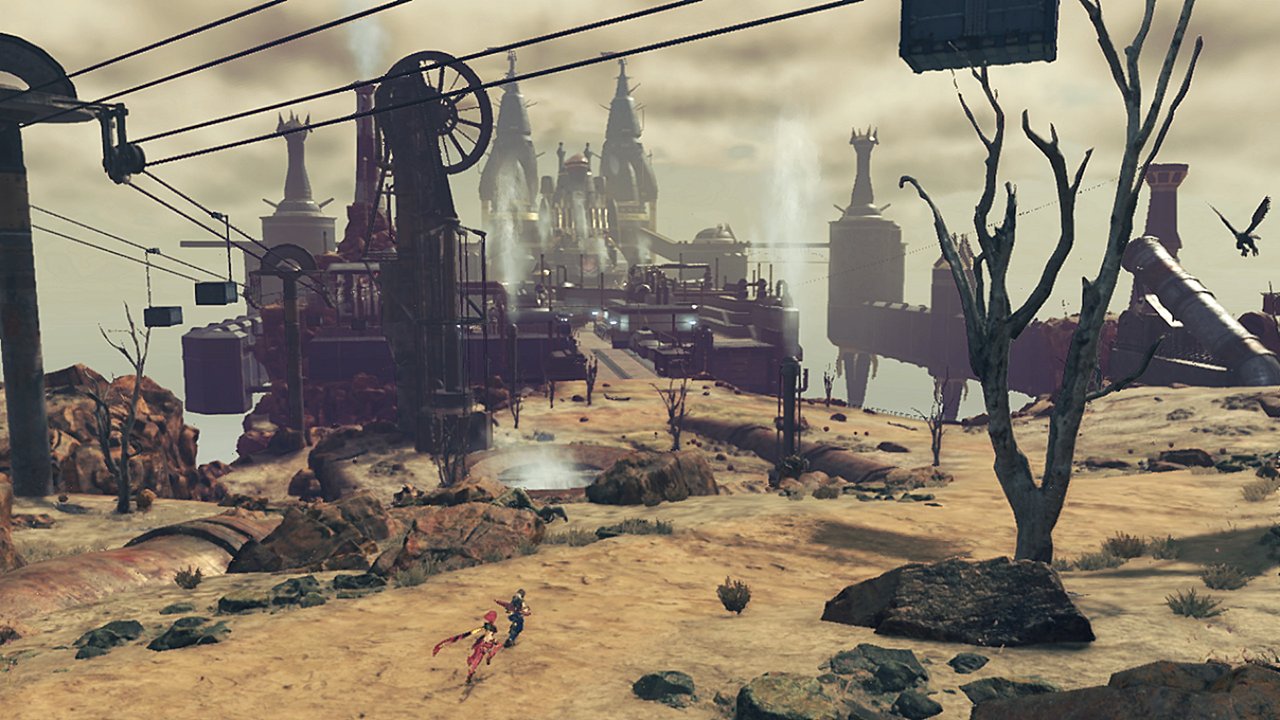
Make no mistake, you’ll often need to have the advantage when going against an opponent of a similar level. While baddies vary immensely in size and strength, even a moderately menacing opponent can possess a ton of HP which may take awhile to whittle down if you don’t bring a game plan. The designs run the gamut from human henchmen, to cartoony critters, to massive beasts straight out of Monster Hunter. Much like prior entries, the game also tosses in the occasional unique monster, which will usually require great strength and execution to overcome.
Enemies sometimes roam the vast landscapes in large quantities, which can lead to trouble as they’re often quite sensitive when it comes to aggro. On one level this unwanted attention makes sense, as it can certainly keep things exciting. Yet I often found myself helplessly fleeing from a band of swift, high-level wolves, or a massive super-powered hawk looming overhead, which would quickly make mince meat of me before I could escape. It’s also quite easy to draw in wandering baddies nearby once you’ve engaged an opponent even when stationary, making a moderately difficult battle nearly futile in a hurry. Still, checkpoints are frequent, fast travel is readily available, and saves are a breeze, which at least limits the frustration factor when dying.
Titans were a joy to explore for the most part, particularly as I delved deeper into the game. I felt a childlike giddiness as I sailed across the vast cloud sea, not knowing what sort of exotic lands and accompanying colonies awaited. Although they’re all intertwined within the larger story in one way or another, each Titan felt like a self-contained world, often crawling with distinct creatures and societies, as well as unique and gorgeous environments. Amongst them are an exotic chain of islands that Rex calls home, a massive chasm of colorful foliage and jagged terrain, and a dusty, industrial Titan occupied by the Empire - and these are but a handful of the locations you’ll pass through. Subtle details like swaying grass and day/night transitions further add to the rich atmosphere and make the lands seem more organic - which is fitting, as they technically are organic. While I’ll always have fond memories trekking across Bionis and Mechonis, I welcomed Xenoblade 2’s departure from the original game’s Titan duopoly in favor of this college of smaller, diverse Titans. Their more modest sizes allow the game to walk the line between open world and linear elements, making for an experience that isn’t overwhelming and keeps things focused.
Cities are rife with bustling activity, plenty of chatty townsfolk, rows of shops, as well as side quests - which are thankfully easier to locate with the addition of indicators hovering over NPCs. The tasks townspeople dish out often resort to less-than-exciting fetch quests and monster hunting, but they’re a decent way to take a break from the main story as well as gain XP and collectables in a different way. Cities even impressively come with individual economies, as you can level up a town when buying and/or selling enough items, which eventually lowers their prices. Another sort of peripheral task you can undertake is to send off some Blades on mercenary missions to boost their affinity and bring in even more riches. Does it add a ton to the game? Not exactly, though it’s a clever way to make use of some of your excess troops that will no doubt begin to pile up as you progress and collect more cores.
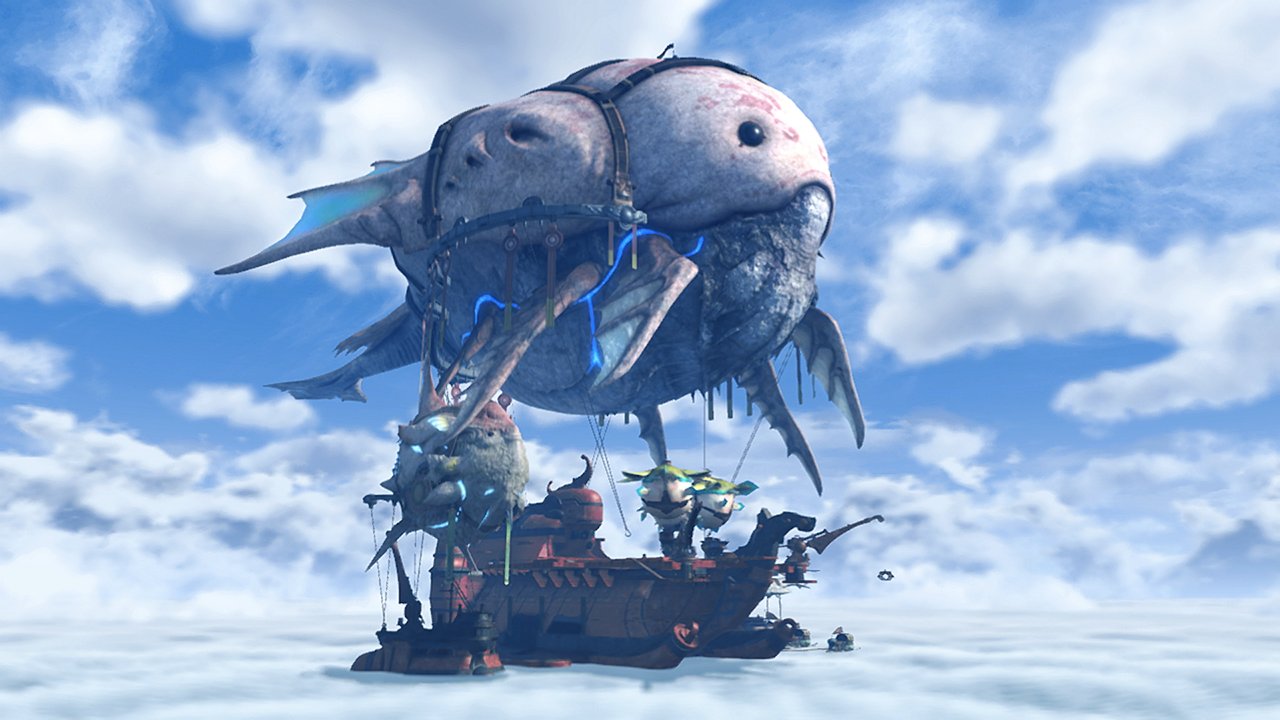
Graphically the game proves to be stellar throughout - especially when playing in docked mode, and contains an artistic depth that blends Japanese color and charm with hints of grittiness and detail found in WRPGs. Impressive draw distances and vibrant, crisp aesthetics help paint the landscape and immerse you in the enchanting, diverse world of Alrest. Playing on the Switch’s screen diminishes this somewhat, as the visuals devolve to a slightly muddled look more reminiscent of the original Xenoblade, but are still quite impressive for a handheld.
The designs of common Blades are a little straightforward, but most of the rarer ones, along with many human characters, contain some unique and visually interesting designs. The contrast of the more stylized, cel-shaded character models in general took some time to win me over, since they can seem a bit jarring at first against the more lush 3D environments. Yet they do allow for some detailed facial expressions that help to add emotion during dialogue exchanges. A few of the voice actors are average at best, and our Nopon companion Tora can be annoying with his goofy, simplistic dialect and constant chirping of “meh,” which makes for a pointlessly unfunny verbal tic. I can’t help but make a Jar Jar Binks comparison here, but I digress. Most of the performances are top notch though, as it the sound design as a whole. The immense soundtrack comes from a handful of Japanese composers led by Yasunori Mitsuda. The compositions consist mainly of some excellent melodic orchestras that could arguably rival a John Williams piece. Though you’ll also hear a bit of Sci-fi techno, rock guitar tracks, softer, more ambient music, and even choirs. Most of the tracks fit nicely and add an emotional layer in their own way.
Xenoblade Chronicles 2 is a game that’s simply a joy to experience, even with its occasional quirks and imperfections. JRPG lovers in particular are in for a treat, and fans of the first Xenoblade on Wii/3DS will appreciate the game’s complete return to form after the even quirkier spinoff X. Those who prefer their games brimming with content need not worry, as this is a gargantuan single player experience that can be as addictive and time consuming as you let it. Completion of the main story brought me near the 80 hour mark, and that was when breezing through or bypassing a large portion of the sidequests entirely. There are still additional Blades I’ve yet to unearth, powerful and unique monsters left undefeated, and areas left under or unexplored. And I look forward to going back.
 Comments
Comments
















